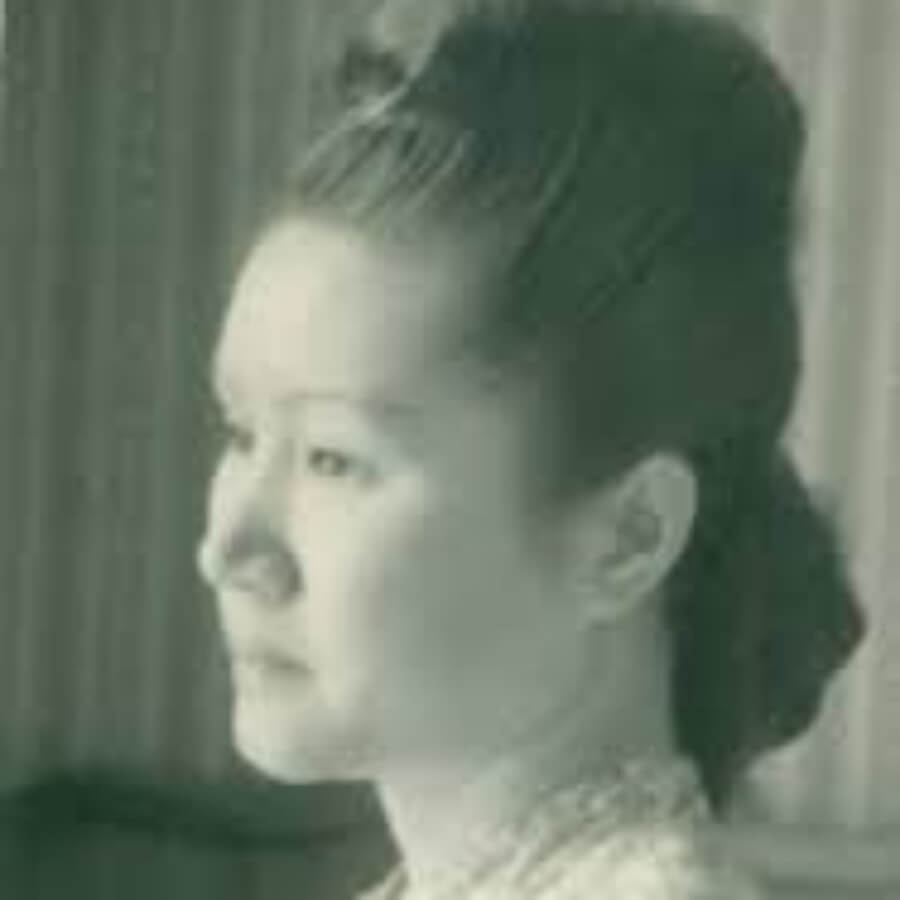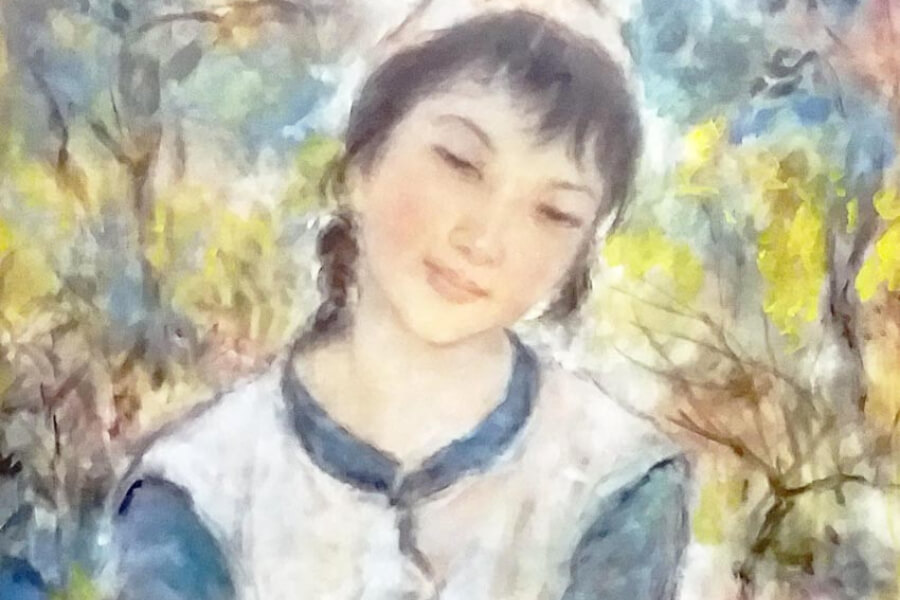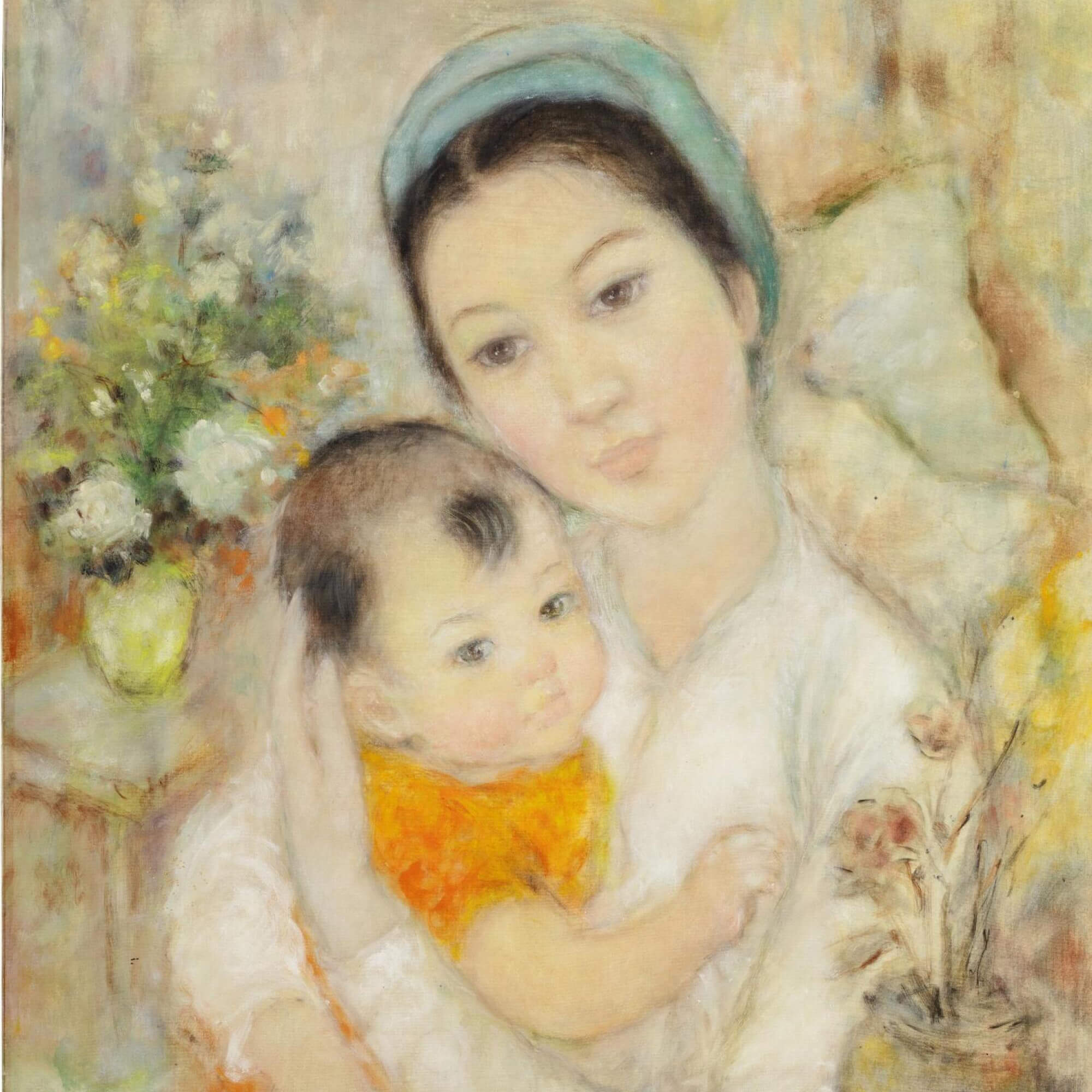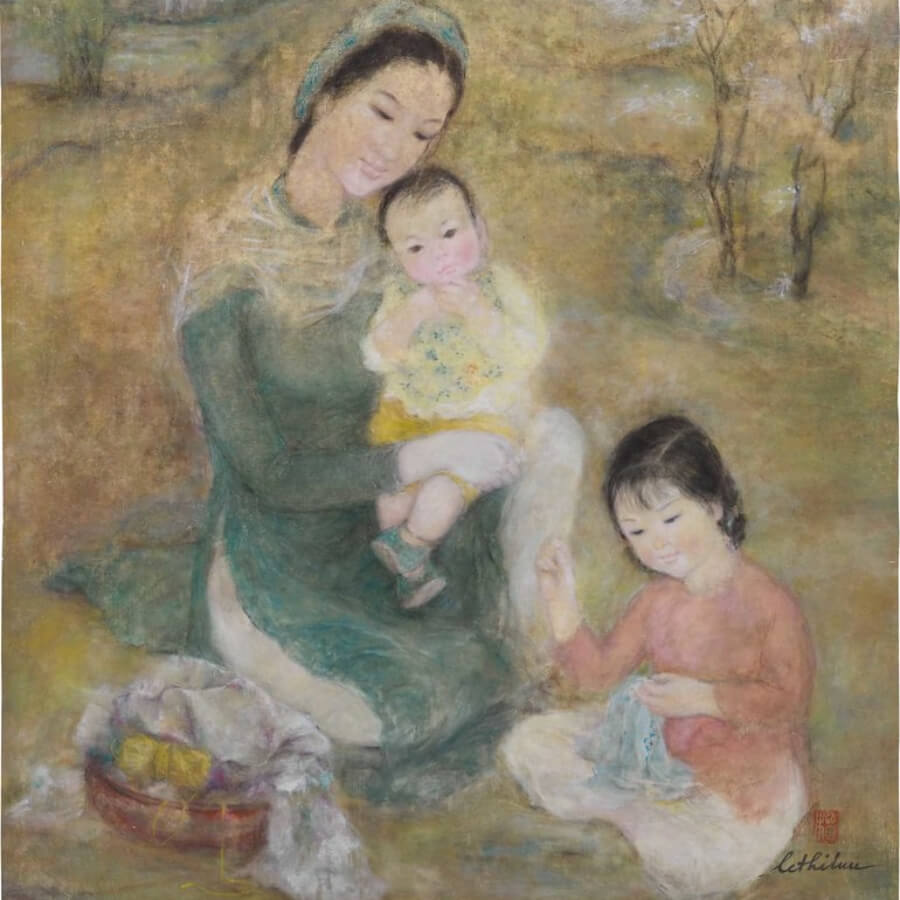Biography of Le Thi Luu
Le Thi Luu ( 19 January, 1911 – 6 June, 1988) is a painter who focuses on silk and oil paintings. She is one of the four famous Vietnamese painters in France who make up Pho – Thu – Luu – Dam and is regarded as the first female painter of modern Vietnamese art.
Born in a family of Westerners, she began painting in elementary school and made the decision to enroll in the Indochina Fine Arts College in 1927.
Her paintings are always praised by teachers Victor Tardieu (one of the two co-founders of the school) and Mr. Joseph Inguimberry. Even as a student, Le Thi Luu had two oil paintings in her first painting exhibition with the school: “Portrait of Mr. Hai” and “Children in the Banana Garden”.
She grew up in a family that was instructed in Confucian virtues, claims Mr. Ngo The Tan. As a result, when she was a student and had to practice painting images of naked males, she also ran into a lot of problems. She is also occasionally envied by the boys in her class because she is a woman joining a male-dominated field. They even slashed or scratched her artwork with knives.
However, this female artist still graduated with a valedictorian degree and became a professor at prestigious schools at that time such as Buoi School, Hang Bai School (Hanoi), Gia Dinh Fine Arts School (Saigon). Le Thi Luu is often mentioned by domestic newspapers.
Le Thi Luu’s Career
1927-1940: Beginning of painting and going to France
Le Thi Luu was still a student at the Indochina Fine Arts College in 1929, and the institution had plans to host the first joint exhibition to showcase the students’ beloved summertime compositions. Surprisingly, after submitting the documents, two persons unexpectedly purchased the two paintings for a total of 400 VND, which is much more than her housing rental fee.These two paintings received praise from teacher Ms. Joseph Inguimberty and principal Victor Tardieu; Even, Portrait of Mr. Hai was accidentally ranked by Mr. Inguimberty on the same level as her elder brother at that time, painter To Ngoc Van.
From 1933 to 1935, according to the current regulations, Le Thi Luu was appointed as a professor at Buoi School, Dong Khanh Girls’ School and Hong Bang School, Hanoi, respectively.
In the period 1935-1936, Le Thi Luu moved to the South, teaching at the Nguyen Thi Minh Khai School, Gia Dinh Fine Arts and Decoration School. In addition, she also collaborated with Tu Luc Van Doan publications such as Today, Women Tan Van, and New Women, and wrote poetry, albeit rarely, under the pseudonym Thach An. In the years 1937 or 1938-1939, the female painter returned to Hanoi to teach at Bao Bao and Dang Ten High School.
In 1940, Le Thi Luu went to France with her husband.
1940-1960: Participated in revolutionary activities and returned to painting
1941: Le Thi Luu had a son named Ngo Manh Duc. Because of the war, she had to leave Paris and move down to Nice, in the South of France.
1942: Followed her husband to work in Guinea, Africa.
1945: Return to Paris
1946: After the National Resistance War, Le Thi Luu and Ngo The Tan actively participated in the anti-French movement, so Ngo The Tan had to stop working with the French government and open a shop to live.
Within 15 years, from moving to France in 1940, to 1954: painter Le Thi Luu composed very little; almost temporarily suspending his creative activities because of family circumstances and participation in the revolutionary movement.
After the 1954 Geneva Agreement, painter Le Thi Luu started to return to painting, active since 1956.
1957 – 1959: Regular exhibition of paintings at Galerie Le Chapelin, 41 rue Faubourg Saint Honoré, Paris and the Union of Women Painters, Sculptors and Engravers (Salon de l’Union des Femmes Peintres, Sculpteurs et Graveurs), won the first prize (Premier Prix) and became an Official Member (Sociétaire) of the Society.
1960-1988: Silk painting period and the last artworks
From 1960, painter Le Thi Luu perfected her own style of silk painting, creating typical works with impressionist painting style. The main topic, besides drawing portraits, is in the word lack: children, young women, and young women.
1962 – 1963: Participated in teaching painting at schools: Lycée Corot, Paris; Lycée Rodin Paris and Lycée d’Orsay (a suburb of Paris)
1971: Moved to An Trang villa, Spéracèdes village, boulevard de la Renaude, where the painter and his family lived until the end of their lives.
From 1972 to 1988: Le Thi Luu was still working hard, passionately composing; “Tam Dai Dong Duong”, completed in 1988, is the last work of painter Le Thi Luu.
June 6, 1988: Painter Le Thi Luu passed away at Antibes hospital.
Styles of painting
She primarily writes about young girls, young women, and children. The female artist creates the characters using her imagination. The face of the subject is oval, harmonic, and balanced. She has soft, vulnerable eyes that are frequently melancholy.
So is the color. Le Thi Luu’s paintings are colorful, cheerful and gentle. The light in the picture is soft, but sometimes sad and quiet. It was also because she liked the Classicism and Impressionism.
Le Thi Luu’s Highlighted Artworks
• Two children in garden
• Woman and Children, 1960-1969
• Two Woman’s Head 1970….









